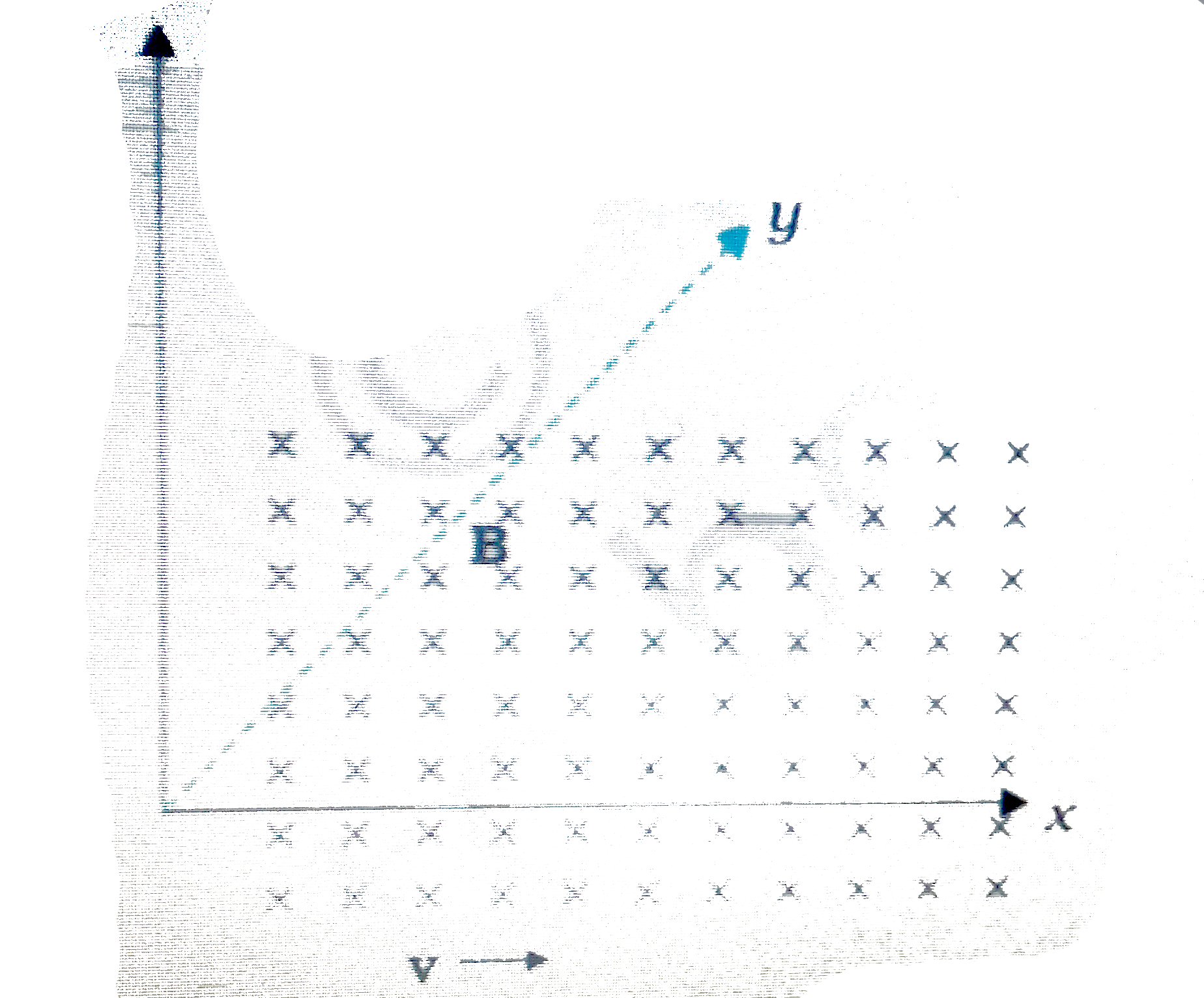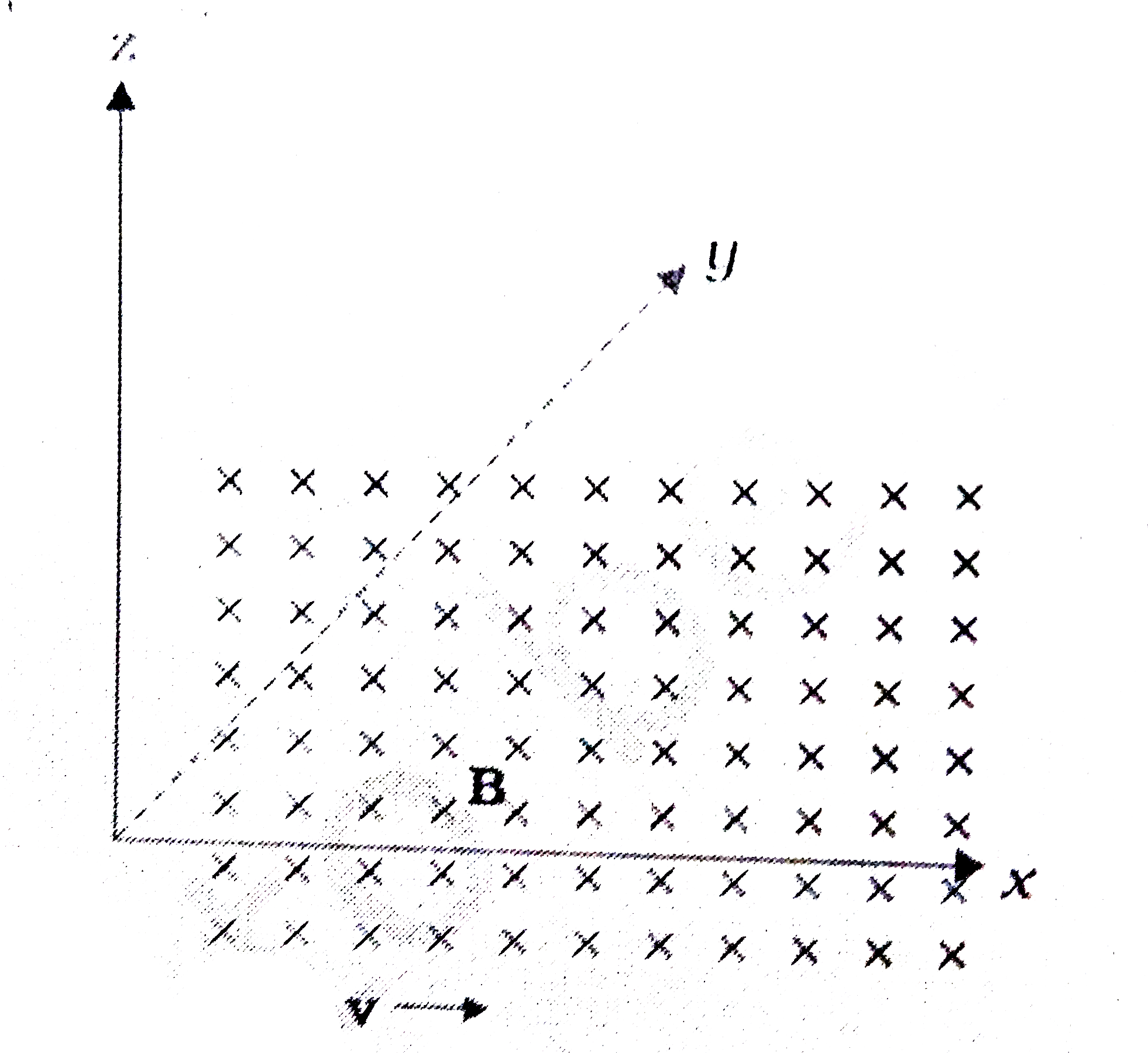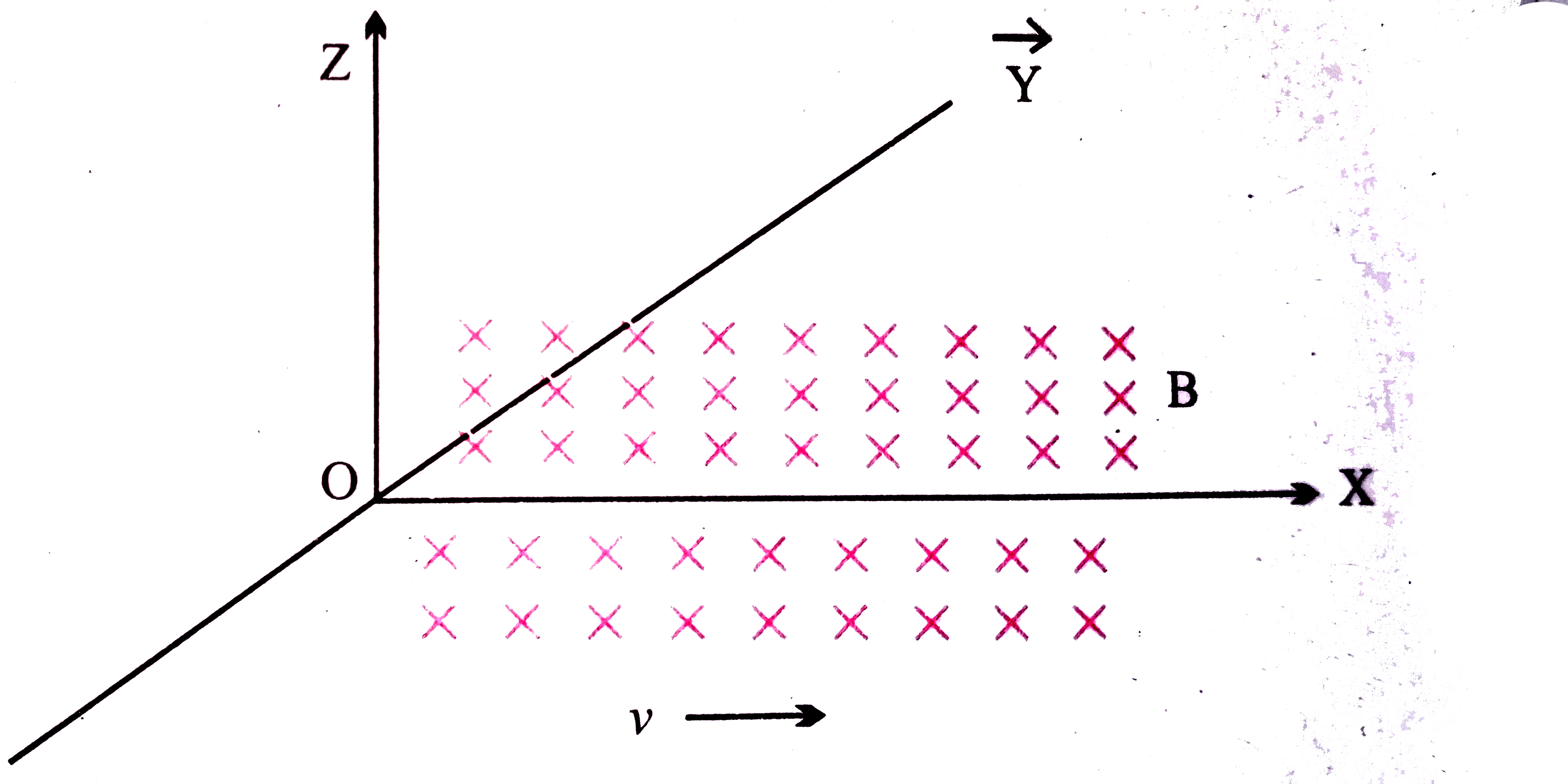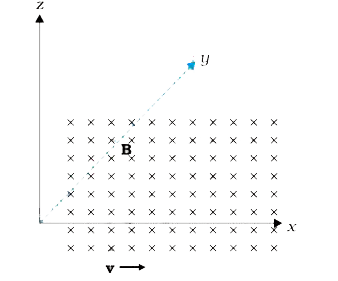If the magnetic field is parallel to the positive y-axis and the charged particle is moving along the positive x-axis (Fig.), which way would the Lorentz force be for (a) an electron (negative charge), (b) a proton (positive charge).
 Solution in Telugu
Solution in Telugu
The velocity v of particle is along the x-axis, while B, the magnetic field is along the y-axis, so v×B is along the z-axis (screw ruel or right-hand thumb rule). So, (a) for electron it will be along-z axis. (b) for a positive charge (proton) the force is along +z axis.
Topper's Solved these Questions
- MOVING CHARGES AND MAGNETISHMBook:VIKRAM PUBLICATION ( ANDHRA PUBLICATION)Chapter:MOVING CHARGES AND MAGNETISHMExercise:VERY SHORT ANSWER QUESTIONS
Explore 15 Videos
- MOVING CHARGES AND MAGNETISHMBook:VIKRAM PUBLICATION ( ANDHRA PUBLICATION)Chapter:MOVING CHARGES AND MAGNETISHMExercise:SHORT ANSWER QUESTIONS
Explore 9 Videos
- MOVING CHARGES AND MAGNETISHMBook:VIKRAM PUBLICATION ( ANDHRA PUBLICATION)Chapter:MOVING CHARGES AND MAGNETISHMExercise:ADDITIONAL EXERCISES
Explore 26 Videos
- MAGNETISM AND MATTERBook:VIKRAM PUBLICATION ( ANDHRA PUBLICATION)Chapter:MAGNETISM AND MATTERExercise:Additional Exercises
Explore 19 Videos
- NUCLEIBook:VIKRAM PUBLICATION ( ANDHRA PUBLICATION)Chapter:NUCLEIExercise:DAM SURE (VSAQ)
Explore 1 Video
Similar Questions
What is the importance of Oersted's experiment ?
View SolutionState and explain Biot-Savart law.
View SolutionTwo concentric circular coils X and Y of radii 16 cm and 10 cm, respectively, lie in the same vertical plane containing the north to south direction. Coil X has 20 turns and carries a current of 16 A, coil Y has 25 turns and carries a current of 18 A. The sense of the current in X is anticlockwise, and clockwise in Y, for an observer looking at the coils facing west. Give the magnitude and direction of the net magnetic field due to the coils at their centre.
View SolutionWhy does a paramagnetic sample display greater magnetisation (for the same magnetising field) when cooled?
View SolutionThe half life of .58Co is 72 days. Calculate its average life.
View SolutionA charged particle moves along positive y-axis with constant velocity in uniform electric and magnetic fields. Ilf magnetic fiedl is actig along positive x-axis, then, electric field should act along positive z-axis. Reason: To keep the charged particle undeviated the relation E=Bxxv must hold good.
View SolutionA positively charge particle moving along x -axis with a certain velocity enters a uniform electric field directed along positively y-axis. Its
View SolutionIf the magnetic field is parallel to the positive y-axis and the charged particle is moving along the positive x-axis (Fig.), which way would the Lorentz force be for (a) an electron (negative charge), (b) a proton (positive charge).
View Solutionयदि चुंबकीय क्षेत्र धनात्मक y- अक्ष के समांतर है तथा आवेशित कण घनात्मक x -अक्ष के अनुदिश है (चित्र 4.4 दिखिए), तो लोरेन्ज बल किस और लगेगा जबकि गतिमान कण a) इलेक्ट्रॉन (तृण आवेश) b) प्रोटोन (धन आवेश) है।

View Solutionयदि चुम्बकीय क्षेत्र धनात्मक Y-अक्ष के समान्तर है तथा आवेशित कण धनात्मक X-अक्ष के अनुदिश गतिमान है तब निम्न चित्रानुसार लॉरेंज बल किस ओर लगेगा । जबकि गतिमान कण, इलेक्ट्रॉन (ऋण आवेश), प्रोटॉन (धन आवेश) है ।

View Solutionएक प्रोटॉन धनात्मक X-अक्ष के अनुदिश गति कर रहा है, जबकि धनात्मक Y-अक्ष के अनुदिश एकसमान चुंबकीय क्षेत्र कार्य कर रहा है। प्रोटॉन पर कार्य करने वाले बल की दिशा बताईए।
View SolutionIf the magnetic field is parallel to the positive y-axis and the charged particle is moving along the positive x-axis (Fig.), which way would the Lorentz force be for (a) an electron (negative charge), (b) a proton (positive charge).

View SolutionIf the magnetic field is parallel to the positive y-axis and the charged particle is moving along the positive x-axis (figure ), which way would the Lorentz force be for (a) and electron (negative charge), (b) a proton (positive charge)
View SolutionIf the magnetic field is parallel to the positive y-axis and the charged particle is moving along the positive x-axis (Fig. 4.4), which way would the Lorentz force be for (a) an electron (negative charge), (b) a proton (positive charge).
View SolutionIf the magnetic field is parallel to the positive y-axis and the charged particle is moving along the positive x-axis (Fig. 4.4), which way would the Lorentz force be for (a) an electron (negative charge), (b) a proton (positive charge).

View SolutionIf the magnetic field is parallel to the positive y-axis and the charged particle is moving along the positive x-axis (Fig.), which way would the Lorentz force be for (a) an electron (negative charge), (b) a proton (positive charge).

View Solution

